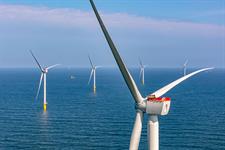Job cuts are due to be focused mainly in Europe, Bloomberg reported, citing people familiar with the matter.
The move comes as the UK-headquartered company pivots away from the capital-intensive renewable energy sector, while remaining committed to its core oil and gas business.
Shell had targeted offshore wind, especially in Europe – with the Netherlands and Scotland key markets for the company – but also in the US.
However, under Wael Sawan – CEO since January 2023 – Shell has pivoted away from renewables. Sawan told the company’s capital markets day last year that the oil major would “selectively take development risk in renewable generation projects”, while remaining “absolutely committed” to its upstream oil and gas business.
Renewables chief Thomas Brostrøm – hired to lead the company’s push into offshore wind – left Shell within two years of joining.
And the oil major also pulled out of the planned 2.4GW SouthCoast offshore wind project off Massachusetts in the US, citing its strategy to “hone [its] portfolio of renewable generation projects in key markets where [it has] an advantaged position”.
The company plans to invest $10-15 billion across 2023-25 to support the development of “low-carbon energy solutions” – including e-mobility, low-carbon fuels, renewable power generation, hydrogen and carbon capture and storage – a spokesperson told Windpower Monthly.
Last year, Shell invested $5.6 billion in such technologies – 23% of its capital spending in 2023.
A spokesperson for Shell said: “In line with our previously announced shift to prioritising value over volume in power, we are concentrating on select markets and segments to deliver the most value for our investors and customers through the energy transition.
“As a result of this, Shell is looking at how it can continue to compete for offshore wind projects in priority markets while maintaining our focus on performance, discipline and simplification.”



)






